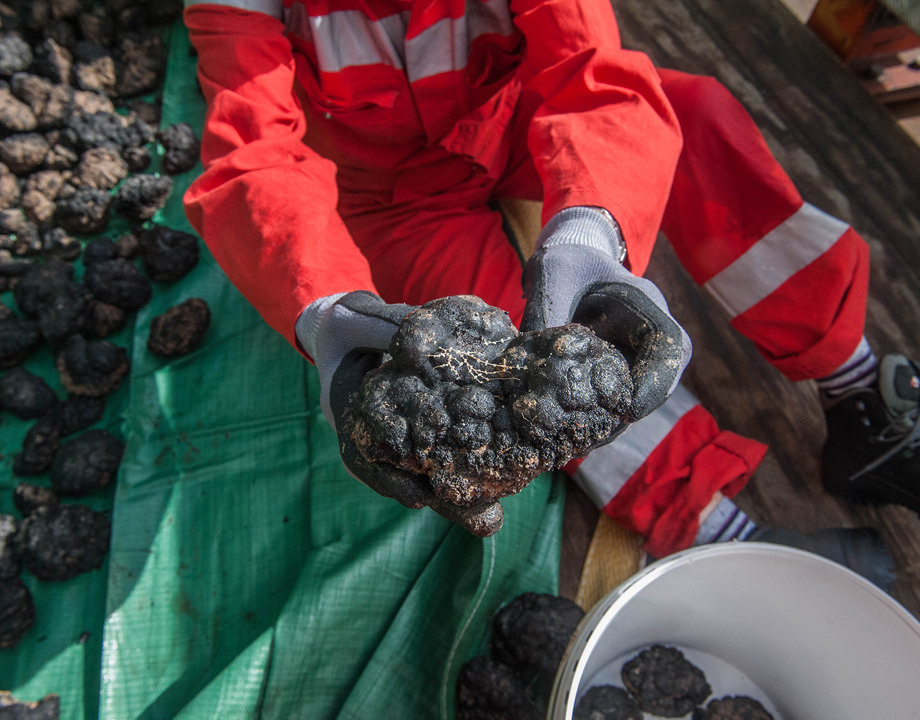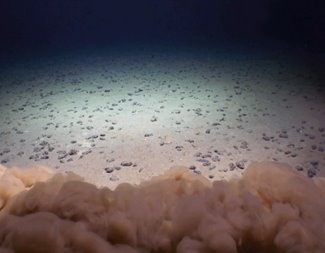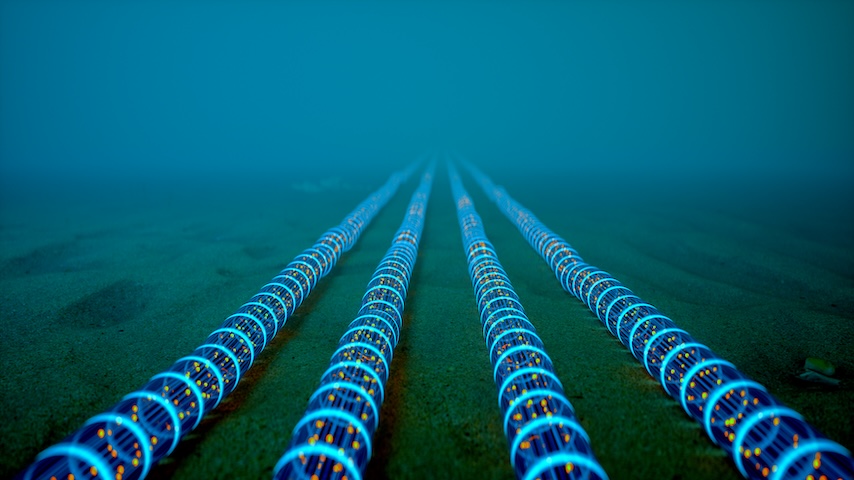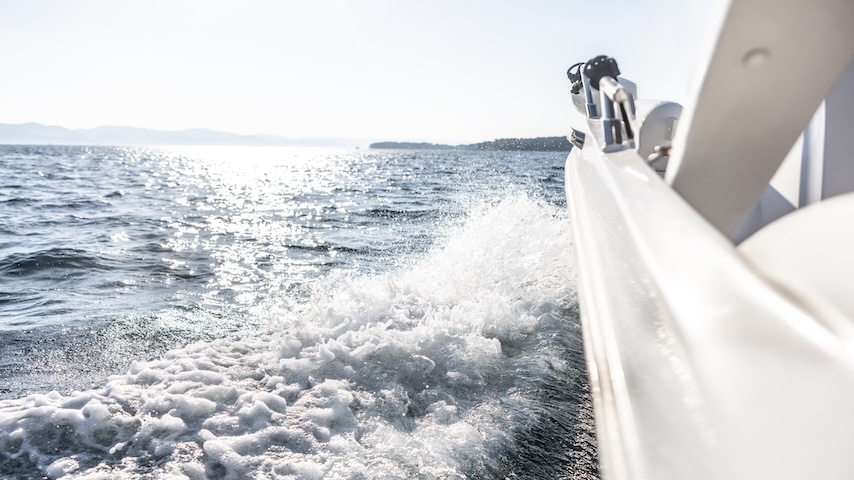Deep-Sea Mining Illustrates Turbidity Currents
Deep-Sea Mining Illustrates Turbidity Currents


Polymetallic nodules holding minerals are dredged from the ocean floor in deep-sea mining tests.
The deep-sea beds of the world’s oceans are scattered with ancient, potato-sized rocks called polymetallic nodules that contain nickel and copper. Those minerals are in high demand because they’re used in the batteries that power electric vehicles and store renewable energy.
With interest growing in marine minerals, researchers at Massachusetts Institute of Technology (MIT) are studying how bringing them to the surface via deep-sea mining will affect the oceans’ environment. Small deep-sea mining efforts halted in the 1990s and the method has never been done on a large scale, so scientists haven’t studied its effects on ocean biology, said Thomas Peacock, MIT professor of mechanical engineering, who leads the mining research group.
“It’s imperative to fully understand the environmental impact of mining resources from the deep ocean and compare it to the environmental impact of mining resources on land,” Peacock added.
Sediment plumes produced by deep-seabed mining are a major concern as they will spread over potentially large areas beyond the actual site of mining and affect deep-sea life, added Henko de Stigter, a marine geologist at the Royal Netherlands Institute for Sea Research.
In the first study to be done on the topic, the researchers are looking at the plumes of sediment a mining vehicle kicks up while moving over the seafloor. The researchers wanted to know how far the “collector plume” clouds move, how gradually they disperse, and how they might affect the waters they move through.
Along the way, they observed a never-before-seen fluid dynamic process called a turbidity current.
Research efforts can’t wait. Already the International Seabed Authority in Kingston, Jamaica, has issued 28 exploration contracts for 20 countries to investigate mining sites.
More for You: Mining Looks to Digitalization and More to Decarbonize
The 78 million tons of nickel available on land pales in comparison to the 274 million tons estimated in one area in the Pacific Ocean known as the Clarion-Clipperton Zone, Peacock said. The zone is about 2,500 miles by 3,000 miles wide, stetching between Mexico and Hawaii.
To collect the underwater nodules, a mining vehicle essentially drags a sledge across a portion of the ocean floor, sucking them up with a vacuum that sends the rocks up a riser pipe to the surface. Unwanted sediment is then separated from the nodules and discharged back into the ocean, creating another type of plume—called a discharge plume—which the researchers have previously studied
In 2021, the scientists chartered a research ship to the Clarion-Clipperton Zone, working with a marine engineering contractor exploring the area and testing methods to bring the minerals to the surface. They equipped a pre-prototype collector vehicle with instruments to monitor the sediment plume left in the vehicle’s wake as it moved across the seafloor, 4,500 meters below the ocean’s surface. Using the sensors and instrumentation aboard the ship, the scientists were able to monitor the sediment cloud and measure its properties and its evolution as it dispersed.
They had hypothesized the collector plume would immediately loft higher into the water column. But to their surprise they found a never-observed fluid-dynamic process called a turbidity current, key to assessing the environmental impact of deep-sea mining operations, Peacock said.
The vehicle stirred up a heavy amount of sediment that was dense enough that, even after some mixing with the surrounding water, generated a turbidity current, a plume that behaved almost as a separate fluid, spreading under its own weight.
As it gradually dispersed, the plume remained relatively low, staying within seven feet of the seafloor.
Become a Member: How to Join ASME
“We saw that the vehicle would be driving in clear water, seeing the nodules on the seabed,” Peacock said. “And then suddenly there’s this very sharp sediment cloud coming through when the vehicle enters the plume.
“The turbidity current spreads under its own weight for some time, tens of minutes, but as it does so, it’s depositing sediment on the seabed and eventually running out of steam,” Peacock said. “After that, the ocean currents get stronger than the natural spreading, and the sediment transitions to being carried by the ocean currents.”
Even so, the sediment might not always behave in the same way. It might sometimes drift up the water column, as hypothesized, Peacock said.
Efforts to model the plumes will have to account for these turbidity currents, he added. The researchers will create digital simulations to depict how the cloud would disperse based on inputs such as the surrounding currents, the makeup of the cloud, and the water’s depth, Peacock said. Future studies have a goal of consolidating the understanding of these sediment plumes.
Jean Thilmany is a science and technology writer in Saint Paul, Minn.
With interest growing in marine minerals, researchers at Massachusetts Institute of Technology (MIT) are studying how bringing them to the surface via deep-sea mining will affect the oceans’ environment. Small deep-sea mining efforts halted in the 1990s and the method has never been done on a large scale, so scientists haven’t studied its effects on ocean biology, said Thomas Peacock, MIT professor of mechanical engineering, who leads the mining research group.
“It’s imperative to fully understand the environmental impact of mining resources from the deep ocean and compare it to the environmental impact of mining resources on land,” Peacock added.
Sediment plumes produced by deep-seabed mining are a major concern as they will spread over potentially large areas beyond the actual site of mining and affect deep-sea life, added Henko de Stigter, a marine geologist at the Royal Netherlands Institute for Sea Research.
In the first study to be done on the topic, the researchers are looking at the plumes of sediment a mining vehicle kicks up while moving over the seafloor. The researchers wanted to know how far the “collector plume” clouds move, how gradually they disperse, and how they might affect the waters they move through.
Along the way, they observed a never-before-seen fluid dynamic process called a turbidity current.
Research efforts can’t wait. Already the International Seabed Authority in Kingston, Jamaica, has issued 28 exploration contracts for 20 countries to investigate mining sites.
More for You: Mining Looks to Digitalization and More to Decarbonize
The 78 million tons of nickel available on land pales in comparison to the 274 million tons estimated in one area in the Pacific Ocean known as the Clarion-Clipperton Zone, Peacock said. The zone is about 2,500 miles by 3,000 miles wide, stetching between Mexico and Hawaii.
To collect the underwater nodules, a mining vehicle essentially drags a sledge across a portion of the ocean floor, sucking them up with a vacuum that sends the rocks up a riser pipe to the surface. Unwanted sediment is then separated from the nodules and discharged back into the ocean, creating another type of plume—called a discharge plume—which the researchers have previously studied
In 2021, the scientists chartered a research ship to the Clarion-Clipperton Zone, working with a marine engineering contractor exploring the area and testing methods to bring the minerals to the surface. They equipped a pre-prototype collector vehicle with instruments to monitor the sediment plume left in the vehicle’s wake as it moved across the seafloor, 4,500 meters below the ocean’s surface. Using the sensors and instrumentation aboard the ship, the scientists were able to monitor the sediment cloud and measure its properties and its evolution as it dispersed.
They had hypothesized the collector plume would immediately loft higher into the water column. But to their surprise they found a never-observed fluid-dynamic process called a turbidity current, key to assessing the environmental impact of deep-sea mining operations, Peacock said.
The vehicle stirred up a heavy amount of sediment that was dense enough that, even after some mixing with the surrounding water, generated a turbidity current, a plume that behaved almost as a separate fluid, spreading under its own weight.
As it gradually dispersed, the plume remained relatively low, staying within seven feet of the seafloor.
Become a Member: How to Join ASME
“We saw that the vehicle would be driving in clear water, seeing the nodules on the seabed,” Peacock said. “And then suddenly there’s this very sharp sediment cloud coming through when the vehicle enters the plume.
“The turbidity current spreads under its own weight for some time, tens of minutes, but as it does so, it’s depositing sediment on the seabed and eventually running out of steam,” Peacock said. “After that, the ocean currents get stronger than the natural spreading, and the sediment transitions to being carried by the ocean currents.”
Even so, the sediment might not always behave in the same way. It might sometimes drift up the water column, as hypothesized, Peacock said.
Efforts to model the plumes will have to account for these turbidity currents, he added. The researchers will create digital simulations to depict how the cloud would disperse based on inputs such as the surrounding currents, the makeup of the cloud, and the water’s depth, Peacock said. Future studies have a goal of consolidating the understanding of these sediment plumes.
Jean Thilmany is a science and technology writer in Saint Paul, Minn.






